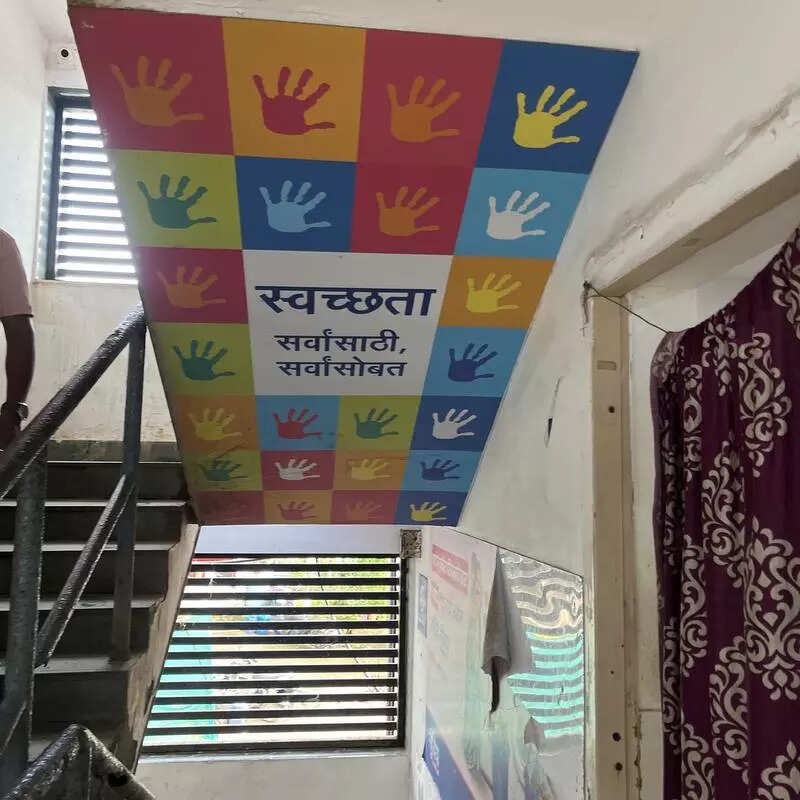No right to pee: How community toilets are failing Mumbai’s women | Mumbai News – Times of India

The queues snaking out of the community toilets in Ambojwadi, Malvani, are the dividing line between the haves and have-nots of this slum in Malad West. They mark out those who have or don’t have access to an increasingly sought-after amenity—a house latrine. Lata Ugade, a homemaker, is one of the haves. She installed a toilet at home some years ago after she found her then teenage daughter, Pooja, had taken to reducing food and water intake to avoid using the dirty and often dysfunctional community toilet. “She grew thin and weak and had frequent mouth ulcers, stomach aches, and headaches,” recalls her mother. “But all that changed when we installed a toilet.”Last week, a report by Praja Foundation highlighted the shortage of public and community toilets in Mumbai. In 2023, it found, a single community toilet seat served 81 men and 83 women—more than twice and thrice the norm, respectively, recommended by Swachh Bharat Mission guidelines. As importantly, the loos were often difficult to use: 69% of the city’s 6,800 community toilet blocks lacked a water connection, Praja’s report found, while 60% had no electricity.In Ambojwadi, Indu Anil Magar says she leaves the door open for fear of the dark—only the corridor is lit.Women are especially affected by the lack of toilets, and at every stage of life, says Marina Joseph, associate director at YUVA, a nonprofit that helps marginalised communities. “Young girls face safety concerns if they have to defecate in the open, [while] unclean toilets have various health implications including UTIs,” she notes. “Lack of a waste disposal system is challenging during menstruation. Older women and those with physical disabilities [have] to navigate toilets that are not suited to their needs.“While men can use public toilets, facilities in their workplace, or even the roadside, women at home have fewer options, says Nasreen Khan, a beautician from Kurla East. Women who work as street vendors or domestic help also struggle—only 1 in 4 public toilets are allocated for women. That means community toilets are women’s best available option, and even this facility is spurned by those who can afford it. Are Individual toilets a solution?Mumbai’s community toilets are built by BMC or MHADA, with toilet seats assigned in equal numbers to men and women. Under the Slum Sanitation Programme, built toilet blocks are to be handed over to a community-based organisation (CBO) to operate and maintain. “But, in some cases, community members can’t be bothered with forming a CBO. The toilet block is then managed by an individual, often with political clout,” says a nonprofit worker with an M-East Ward sanitation plan.User fees are then at risk of being misappropriated. But even legitimate CBOs struggle to maintain toilets. Mankhurd’s Agarwadi women-run community toilet is used by over 300 people daily and earns 10,000 a month—a sum that just about manages to cover electricity and water bills. Few CBOs have money to fix stolen taps, broken doors, and damaged lights. So is the individual toilet the solution to Mumbai’s sanitation problem? The thinktank Observer Research Foundation thinks so. Its white paper on the issue says authorities must incentivise individual toilets in slums as the only “sustainable and fool-proof remedy”. In Ambojwadi, which has a population of less than 60,000, individual toilets are certainly gaining ground, says Shahenshah Ansari, a resident and YUVA community organiser. And no wonder: Eight of the 23 community toilet blocks are non-functional. In one block, nine of the 20 stalls assigned to women have been roped off because they are unusable. Stalls that are functioning are filthy. The CBO running the toilet block has not been audited in a decade; with neither rod nor reward to compel maintenance, they’ve let the place slide. Yet, not everyone can afford to build a latrine or has room for it. Some community toilets workSome non-profits are finding ways to improve community toilets, including by focusing on behaviour change. Many slum residents are migrants with little sense of ownership of neighbourhood amenities, notes Yasmin Mulla, a director at Apnalaya. “How do you cultivate in them a sense of responsibility for this common good?” Apnalaya did this by forming ‘Toilet User Groups’ in Shivaji Nagar, M-East Ward, of 140-150 residents who are trained to help the community take ownership of toilet blocks. Training includes lessons on health risks, on how to use BMC helplines and follow up on complaints. The local CBO now has monthly meetings to audit expenses and review gaps in maintenance. “Earlier the toilet was cleaned only once a day; it’s now cleaned three times,” says Sakshi Sadanand Jadhav, who worked on the project.In Ambojwadi, YUVA has campaigned for better timings and free entry for children. But their chief demand is for a sewerage system—BMC refuses because the slum is not notified, says Ansari. Yet, there have been small wins. At one toilet, the kaccha overflow line – which is often broken, causing sewage to leak into streets and homes – was replaced with iron pipes, says Ansari. “It took one year of leaning on the BMC, but we got the job done.“(With inputs from Sharmila Ganesan)
















